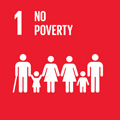- Docente: Lucia Corrain
- Credits: 6
- SSD: L-ART/04
- Language: Italian
- Teaching Mode: In-person learning (entirely or partially)
- Campus: Ravenna
- Corso: Second cycle degree programme (LM) in History, preservation and enhancement of artistic and archaeological heritage and landscape (cod. 6703)
-
from Nov 10, 2025 to Dec 15, 2025
Learning outcomes
The coursework is meant to provide students with a deep knowledge of the various forms and types of museums, from their earlier stages and shapes, both ritual and spontaneous that went along with private and public collections.
Course contents
The course begins with an introduction to museums and collecting in general, before focusing on one of the earliest scientific museums, that of Ulisse Aldrovandi (1522–1605). Much of his 'theatre of nature' is now housed in a room at the Palazzo Poggi Museum, where it displays the collection of naturalia that the scholar had amassed. Even today, this collection continues to astonish visitors with its array of specimens. Aldrovandi is also renowned for his printed work, Storia Naturale (Natural History), which features woodcut plates that showcase the work of painters, draftsmen, and engravers who contributed to the dissemination of knowledge about the natural world. The course will also cover many other aspects of the Palazzo Poggi Museum, such as the role of women in science: Anna Morandi and Laura Bassi Veratti, as well as the botanical gardens.
If funding is successful, a practical exercise at the Ravenna MAR is planned, details of which will be provided during the introductory lecture.
Readings/Bibliography
For attending students
Pinna, G., Museo contemporaneo, Treccani, Roma 2025.
Batschmann, O., Il pubblico dell'arte, Johan&Levi, Milano 2024.
Giannitrapani, A., Introduzione alla semiotica dello spazio, Carocci, Roma 2024.
Olmi G., L’inventario del mondo. Catalogazione della natura e luoghi del sapere nella prima età moderna, Il Mulino, Bologna 1992 (verranno indicate le parti da studiare).
Non-attending students must also prepare: publication on virtual:
Luca Dal Pozzolo, Il patrimonio culturale tra memoria, lockdown e futuro, Editrice bibliografica, (disponibile anche in e-book), Milano, 2021.
Teaching methods
The lectures will be supplemented by seminar sessions for attending students, involving active participation. Students will be required to present a letter in class about an artistic object that interested them.
Students with disabilities or specific learning disorders (DSA) who require compensatory tools may inform the lecturer so they can be referred to the relevant contact person to agree on the most appropriate measures.
PowerPoint presentations from the lectures will only be provided to those who attend.
Assessment methods
The oral test, which is open to both non-attending and attending students, consists of an interview designed to evaluate the critical thinking skills acquired by the student, who must demonstrate an appropriate knowledge of the books listed in the syllabus.
1. Students will be assessed on their ability to analyse texts in depth and place them within a broader context. The expressive mastery employed during the interview will also be a key factor.
2. Fair marks will be awarded for mostly mnemonic knowledge, an inability to analyse in depth, and a language that is correct but not always appropriate for the texts to be studied.
3. Superficial comprehension, poor analytical ability, and inadequate expression will lead to little more than adequate marks.
4. Deficiencies in form, inappropriate language and a lack of orientation within the bibliographical material to be studied in the programme will lead to negative assessments.
Teaching tools
Handouts and further reading will be available on the UNIBO platform https://virtuale.unibo.it.
Office hours
See the website of Lucia Corrain
SDGs




This teaching activity contributes to the achievement of the Sustainable Development Goals of the UN 2030 Agenda.
